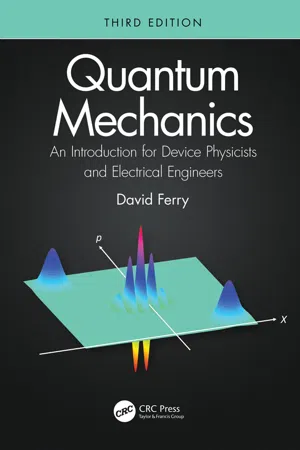1.1 Introduction
Science has developed through a variety of investigations more or less over the time scale of human existence. On this scale, quantum mechanics is an extremely young field, existing essentially only about a century. Even our understanding of classical mechanics has existed for a comparatively long period—roughly having been formalized with Newton’s equations published in his Principia Mathematica, in April 1686. Up until the very end of the nineteenth century, mechanics in the form of Newton’s laws were comfortable, being understood and accepted by all who dealt with the motion of reasonable bodies. With the turn of the new century, however, mechanics would be shaken to its roots. The change began already on December 14, 1900, when Planck (1900) presented his new theory of black-body radiation to the German Physical Society, and this change would affect mechanics in physically small structures (and lead to quantum mechanics). Mechanics of large bodies would similarly be changed in 1905 with the arrival of Albert Einstein’s (1905a) relativity theory. In this book, we will deal with only the first of these two great breakthroughs.
Black-body radiation had been studied for many years prior to Planck’s discovery, but it lacked an adequate theory. One of the early theories was due to Wien, but it was approximate, and it was discovered that it really didn’t fit to the observations. The fact that the theory did not fit led to new, very careful experiments at one of Berlin’s national laboratories, and fortunately, Planck was able to interact with the latter group. This provided the data that allowed Planck to finalize his theory in what is now known as the Planck black-body radiation law:
(1.1)
where f is the frequency of the radiation, T is the temperature, and I is the intensity of the radiation. In addition to these parameters, Planck defined two new constants which came from comparing the data to the theory. One of these, he named as the Boltzmann constant, kB = 1.380649 × 10–23 Joules/Kelvin. The second, he did not name, but it has since come to be known as Planck’s constant h ~ 6.62607015 × 10–34 Joule-second. (While these constants historically were more uncertain, the redefinitions that occurred after 2019 in the SI base units have given us these values.) In coming to his radiation law, Planck had to make one more connection and that is a relation between the frequency and the energy, as
(1.2)
where E is the energy of light at the frequency f. While Planck had given us the idea of quanta of energy, he was not comfortable with this idea. But it took only a decade for Einstein’s theory of the photoelectric effect (discussed later) to confirm that radiation indeed was composed of quantum particles of energy given by (1.2).
While we commented that (1.2) leads us to conclude that Planck had quantized the radiation with which he was dealing, this is not evident from (1.2) alone. We also have to consider the amount of power that is provided by the radiation. For example, let us assume that the light from the sun (which is a black-body radiator) arriving at the surface of the earth is, on average, about 0.1 W/cm2. If the average photon has an energy of 2.5 eV, then the number of photons arriving at the surface of the earth is about 2.5 × 1017 per second per square centimeter. It is this combination of quantities, power and energy, that together requires the light to be quantized. That is, about 2.5 × 1017 photons/cm2 arrive every second from the sun, and this requires that the power falling on the earth’s surface must jump with the arrival of each photon.
But, to be truthful, this is not such a revolution, as the ancient Greeks always believed that light was composed of small corpuscular units. Even the great physicist Newton tended to believe that light was corpuscular in nature. It was only the work of Young (1809) in the late eighteenth century that showed that light would give rise to an interference effect, a property of waves. Let us examine this important aspect of light as a wave. If we create a source of coherent light (a single frequency), and pass this through two slits, the wavelike property of the light will create an interference pattern, as shown in Figure 1.1. Now, if we block one of the slits, so that light passes through just a single slit, this pattern disappears, and we see just the nor...
